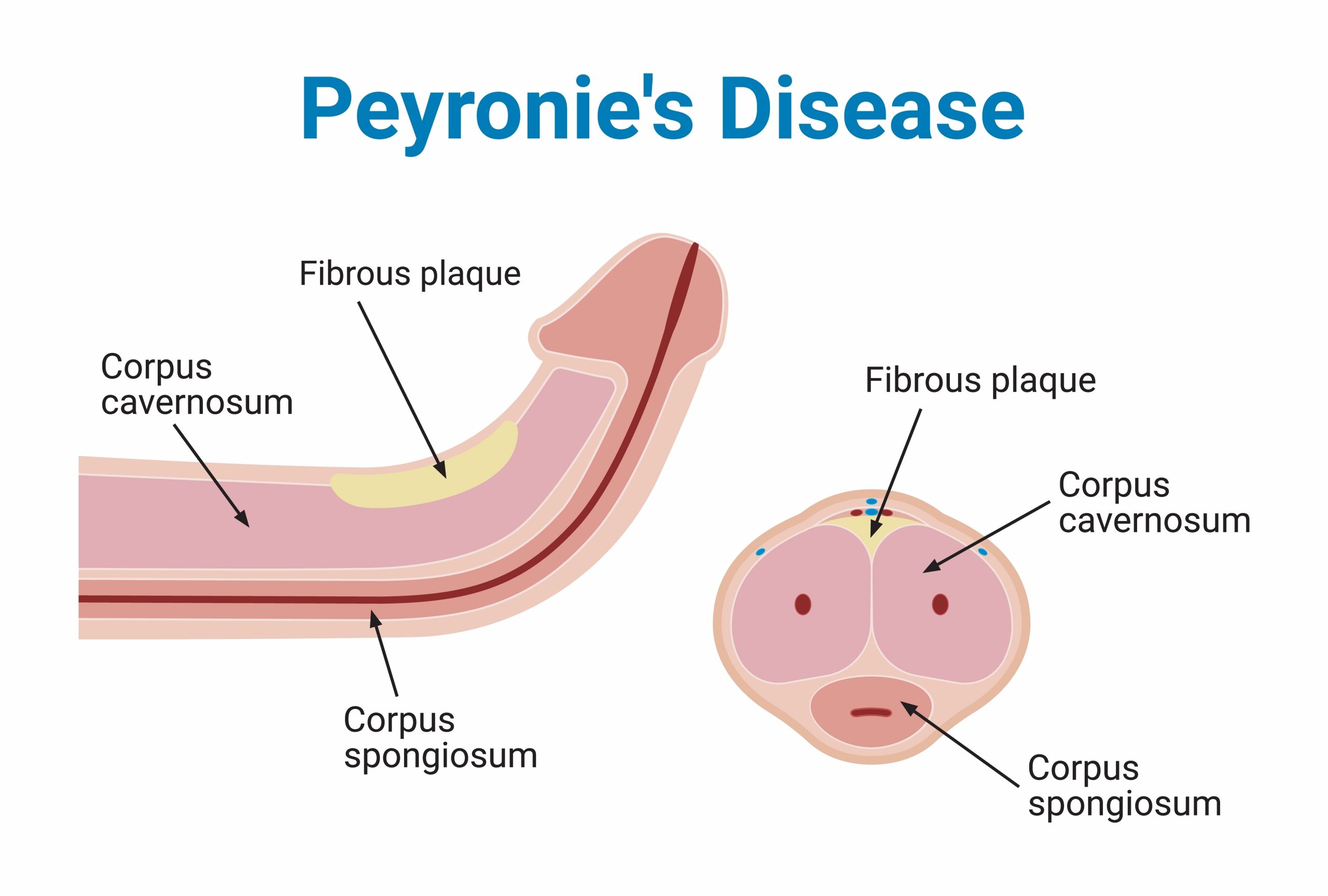Home / Penis Curvature
Penile Curvature
Bent or Curved Penis
Penile curvature is a common condition that can be either congenital or acquired. It can occur anywhere along the penile shaft and can deviate in any direction. Congenital penile curvature can be downward (called congenital chordee) or can be lateral (to the left or right) and is caused by a disparity in the lengths of the erectile bodies of the penis with the penis curving toward the shorter side.
Acquired penile curvature is caused by a condition called Peyronie’s disease which results in a plaque of scar tissue forming on the outer elastic covering of the erectile bodies called the tunica albuguinea. The penis is a highly vascularized organ that is divided into three compartments. The paired corpora cavernosa are the structures that contain the erectile tissue. The corpus spongiosum contains the urethra (urine channel) located on the undersurface of the penis. During erection, the scar tissue limits expansion of this portion of the penis causing indentation. As the rest of the corpus cavernosum and corpus spongiosum lengthen, the penis bends toward the involved area. The plaque itself is benign or noncancerous. Peyronie’s disease is not contagious and is not known to be caused by any transmittable disease.
The symptoms of Peyronie’s disease include penile curvature, penile pain that may increase upon erection, and difficulties achieving or maintaining an erection. The penis may become rigid up to the area of the scar and remain flaccid past that point. A narrowing or “waist-line” may develop giving the penis an “hour glass” appearance. Often a hard plaque can be felt along the penile shaft. Occasionally the penis may become so severely curved that intercourse are painful to both parties and penetration may become mechanically impossible.
Doctors can usually diagnose Peyronie’s disease based on a physical examination. The plaque can be felt when the penis is limp. Full evaluation, however, may require examination during erection to determine the severity of the deformity. The erection may be induced by injecting medicine into the penis or through self-stimulation. Some patients may eliminate the need to induce an erection in the doctor’s office by taking a digital picture at home. The examination may include an ultrasound scan of the penis to pinpoint the location(s) and calcification of the plaque. The ultrasound can also be used to evaluate blood flow into and out of the penis if there is any concern about erectile dysfunction.
The treatments for Peyronie’s Disease can be categorized as medical or surgical. Oral medications such as vitamin E (which can also be applied topically), Potaba, pentoxifylline and colchicine have been studied and beneficial effects have yet to be proven. These medications may be tried during the first 12 month period of plaque stabilization. Intralesional injections (into the scar) of steroids have been attempted and are also of questionable benefit. Only intralesional injection of verapamil, a calcium channel blocker or interferon has some beneficial effect especially for those with milder curvature. Radiation and ultrasound treatments have been utilized in patients with significant amounts of pain. While these treatments are successful in relieving the pain they do little to correct the curvature. Reconstructive surgery has proven to be the only therapy that corrects the curvature and eliminates the pain on a consistent basis.
Several types of reconstructive procedures have been developed and are tailored to the individual problem. The simplest surgical procedure is the corporal plication. Sutures are placed in the lining of the penis opposite the curvature to straighten the penis. This procedure is reserved for patients with mild curvatures, no pain and where penile shortening is not a major concern. Patch corporoplasty was developed to correct curvature and reduce the pain while maintaining penile length. During this procedure the plaque is incised and covered or “patched” with a piece of vein (taken from the ankle), buccal mucosa or synthetic material such as Gortex . Men who experience severe erectile dysfunction associated with Peyronie’s disease may opt to have a penile implant inserted as this will correct both problems.

